Español abajo
Get inspired by nature and create a paper broom sculpture.
Download Activity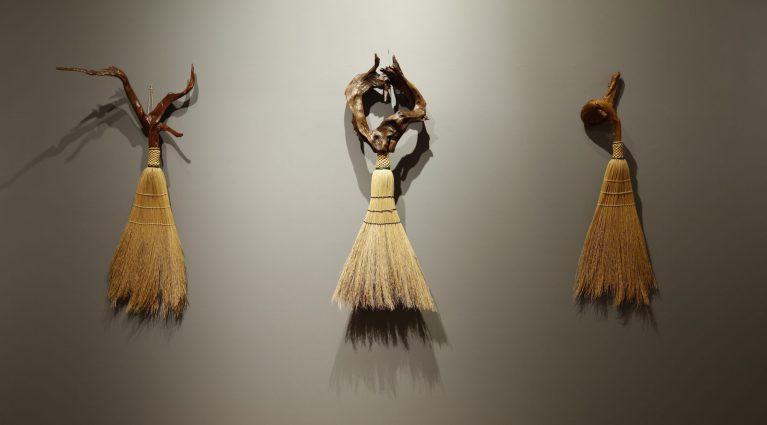
Friendswood Brooms, Untitled, 2003
Using natural wood or antler handles, the Gates family wraps and binds the broomcorn using traditional techniques inspired by Shaker and Appalachian designs. The Gates family practices a technique of binding dating back to the 1790s, using just one nail and pressure to wrap string around natural broomcorn, a special type of sorghum, to secure it to the handle with no glue, tape or other type of adhesive. The broom actually begins with a walk in the woods, though, searching for the perfect branch, vine or shed antler to make the handle. “Nature does all the work. I just show it off a little bit,” Marlow says.
Friendswood Brooms are often used in wedding rituals, religious ceremonies or cleansing rituals. They can be used to sweep the floors clean of both dirt and bad luck. They can also be simply viewed as beautiful sculptural objects – art brooms for art’s sake.
Supplies
Color Paper, Found Object or Cardboard Tube, String or Wire, Scissors, Tape
Instructions
Step 1: With the permission of a parent or guardian take a walk in nature, your backyard or your neighborhood. Look for something that inspires you. Maybe it’s a specific branch, found object or something else that can be used as a small broom handle. If you’re not able to go for a walk, search your home for something that can be used instead, maybe the cardboard tube of a toilet or paper towel roll?
Step 2: What color broom do you want to make? Choose a piece of paper in that color. Lay the paper down horizontally (long ways).
Step 3: On the left end of the paper, place your object a few inches in from the top. Use tape to secure the left end of the paper to your object. Roll your object across the paper. Once you get to the end of the paper use tape to hold it in place.
Step 4: Use scissors to cut a long piece of string. Tightly tie the piece of string around your object where the top of the paper is (double knot it). Leave some length to the beginning of the string. Now wrap the longer part of the string around the paper until you reach the end of where the object is or start to run out of string. Leave enough length to tie the end of the string to the beginning of the string where you tied the knot.
Step 5: Use scissors to cut the paper into strips to create the bristles of the sculpture. Trim the length of the paper if needed. Crumple the paper and cut the tips of the bristles on an angle to add more texture to the broom.
Vocabulary
Found Object – a thing that someone else has given or thrown away that is often repurposed by artists
Sculpture – an artwork made from materials such as glass, wood, clay, metal that is 3D
SEE FRIENDSWOOD BROOMS IN ENTWINED: RITUAL WRAPPING AND BINDING IN CONTEMPORARY SOUTHERN ART AT THE OGDEN MUSEUM.
CHECK OUT THE OGDEN MUSEUM ONLINE FOR MORE RESOURCES !
QUESTIONS? EMAIL EDUCATION@OGDENMUSEUM.ORG.
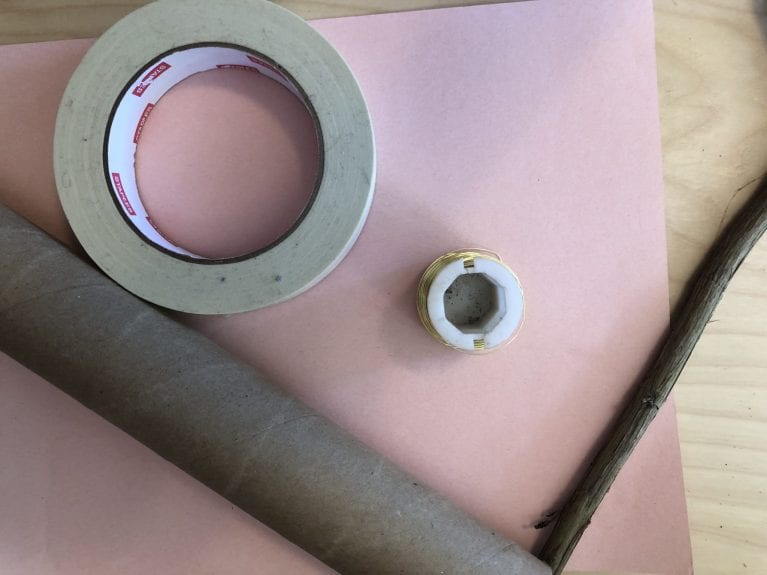
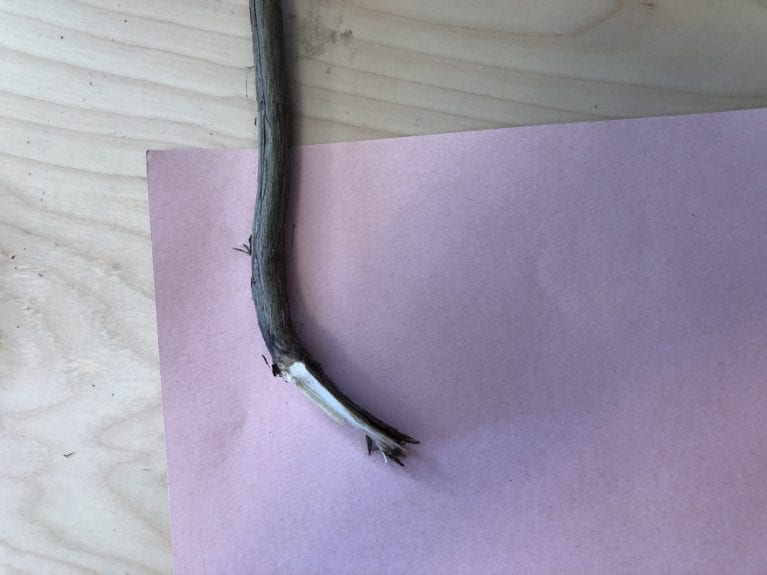
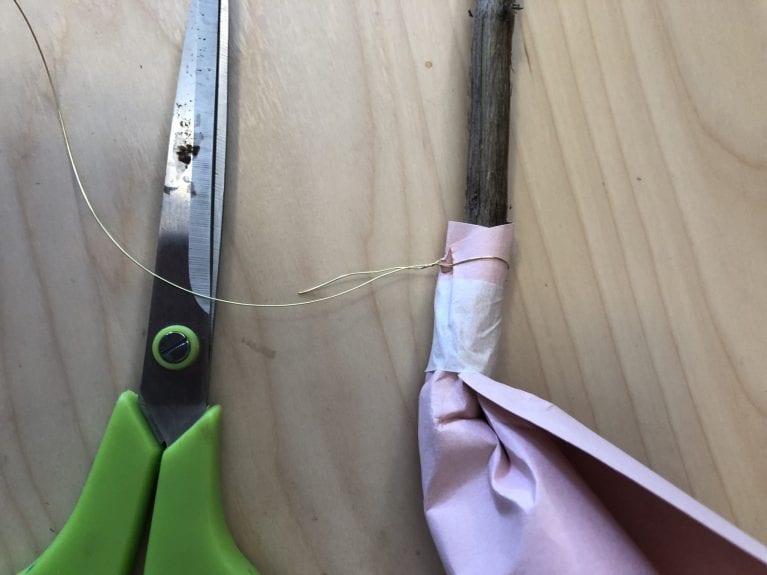
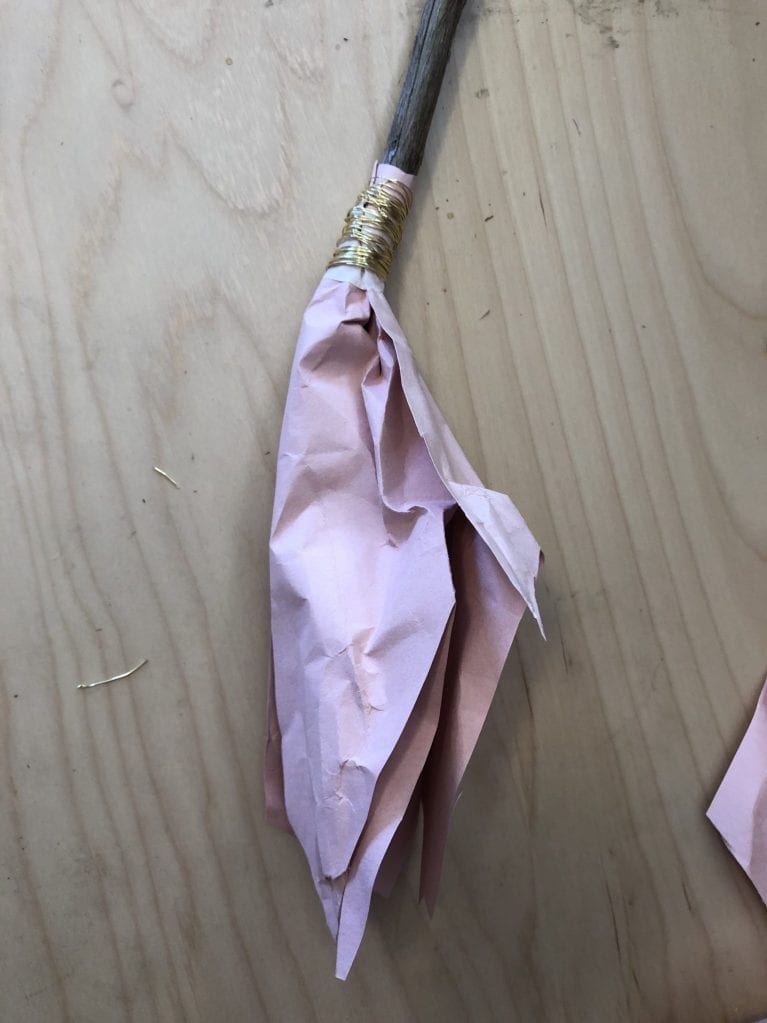
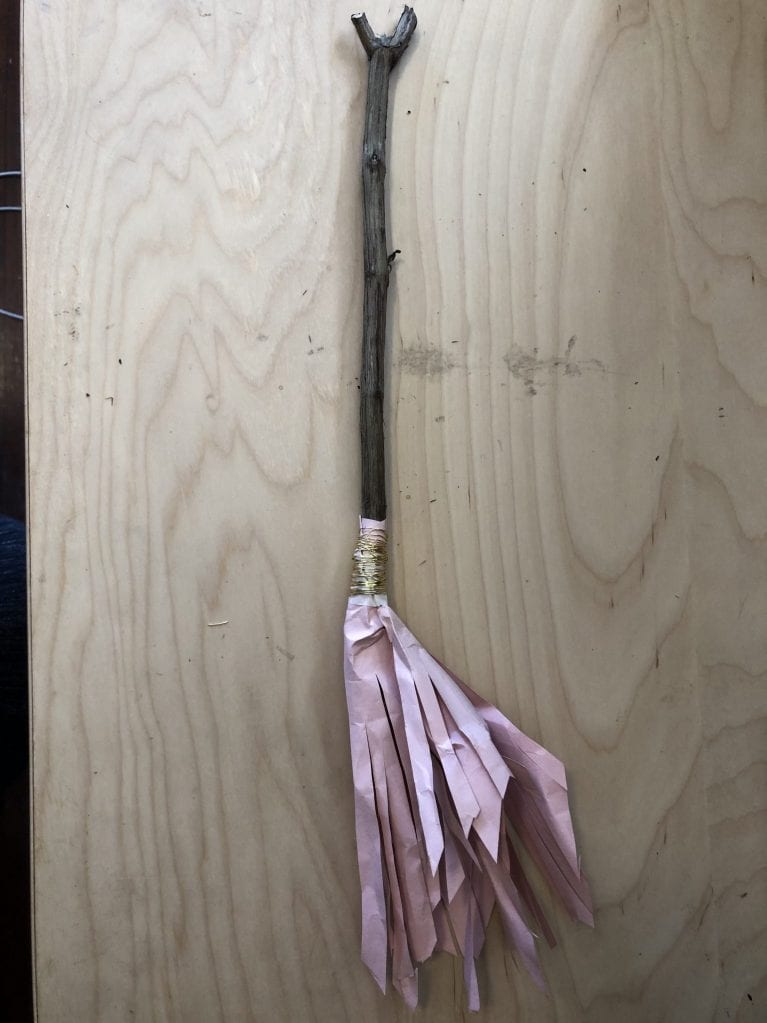
_______________________________________________________________________
Actividad artística O-riginal: Escultura de escoba con objetos encontrados inspirada por Friendswood Brooms
Inspírate por la naturaleza y crea una escultura de escoba con papel.
Descargar Actividad
Friendswood Brooms, Untitled, 2003
La familia Gates utiliza madera natural o astas para los mangos de las escobas y envuelve y amarra sorgos utilizando técnicas tradicionales inspiradas por Shaker y los diseños apalaches. La familia Gates utiliza una técnica de amarre que se originó en los años 70 y consiste en utilizar sólo un clavo y hacer presión al enrollar un hilo alrededor del sorgo natural, para así fijarlo al mango sin pegamento, cinta u otro tipo de adhesivo. La escoba, de hecho, nace en una caminata por el bosque: se busca la rama, vid o asta perfecta para hacer el mango. “La naturaleza hace todo el trabajo, yo sólo lo hago lucir un poco”, dice Marlow.
Las escobas Friendswood Brooms se utilizan generalmente en rituales de bodas, ceremonias religiosas o rituales de limpieza. Se pueden utilizar para barrer tanto la suciedad como la mala suerte del piso. También pueden ser simplemente hermosos objetos esculturales.
Materiales
Papel de color, objetos encontrados, tubo de carton, hilo o cable, tijeras, cinta adhesiva.
Instrucciones
Paso 1: Pídele permiso a un padre o tutor para dar un paseo por la naturaleza, tu jardín o en tu vecindario. Busca algo que te inspire. Quizás sea una rama en particular, un objeto encontrado u otra cosa que pueda ser utilizada como pequeño mango de escoba. Si no puedes dar un paseo, busca en tu hogar objetos que puedas utilizar: quizás el cartón del rollo de papel higiénico o de las toallas de papel.
Paso 2: ¿De qué color quieres que sea tu escoba? Elige una hoja de papel de ese color. Coloca el papel en posición horizontal.
Paso 3: En el extremo izquierdo del papel, coloca tu objeto a unos centímetros de la parte superior de la hoja. Utiliza cinta adhesiva para fijar el extremo izquierdo del papel con tu objeto. Enrolla el objeto a través del papel y utiliza cinta adhesiva para mantenerlo en su lugar.
Paso 4: Utiliza las tijeras para cortar un hilo largo. Con firmeza, ata el hilo alrededor de tu objeto donde está la parte superior del papel (haz un doble nudo). Deja un poco de longitud al principio del hilo. Ahora envuelve la parte más larga del hilo alrededor del papel, hasta que alcances el final donde está el objeto o hasta que se te acabe el hilo. Deja una longitud suficiente de hilo para atar el extremo del hilo al principio del hilo donde ataste el nudo.
Paso 5: Utiliza las tijeras para cortar el papel en tiras para crear las cerdas de la escultura. Si es necesario, recorta el largo del papel. Arruga el papel y corta las puntas de las cerdas en ángulo para agregarle más textura a la escoba.
VÉ MÁS DE FRIENDSWOOD BROOMS EN ENTRELAZADO: ENVOLTURA Y ATADURA RITUAL EN EL ARTE SUREÑO CONTEMPORÁNEO EN EL MUSEO OGDEN.
¡VISITA OGDEN MUSEUM ONLINE PARA MÁS RECURSOS!
¿PREGUNTAS? ENVÍA UN EMAIL A EDUCATION@OGDENMUSEUM.ORG.
Translation by Agostina Coll





